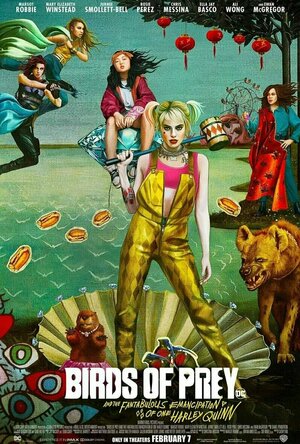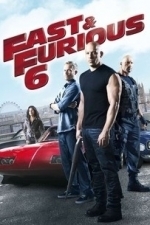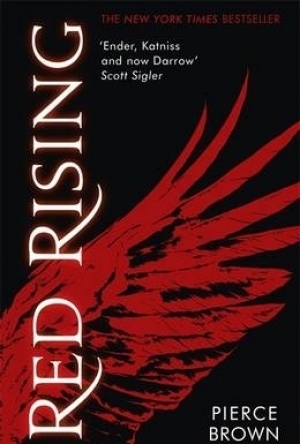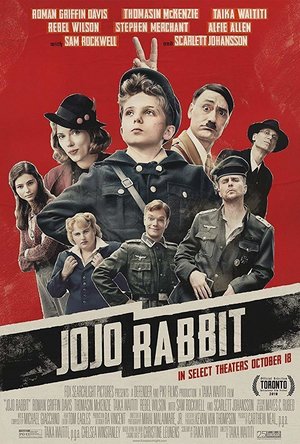Lee (2222 KP) rated Birds of Prey (And the Fantabulous Emancipation of One Harley Quinn) (2020) in Movies
Feb 8, 2020
When we join Harley, she’s just broken up with the Joker. A nice little animated intro, with voiceover from Harley, gives us a quick overview of her life from birth, through childhood and eventually to the point where her and Mr J part ways. She hasn’t made it public knowledge just yet though, for fear of what might happen when word gets out that she no longer has the Joker’s protection. Instead, Harley buys herself a hyena called Bruce, takes part in vicious roller derbys and spends her nights partying at the nightclub of Gotham crime lord Roman Sionis (Ewan McGregor).
Following an explosive public declaration of her relationship status - driving a big truck into Ace Chemicals, the spot where Harley first pledged herself to Mr J - Harley begins to find her life becoming increasingly entwined with that of the other Birds of Prey that will eventually make up the all-women squad. Renee Montoya (Rosie Perez) is a detective, in the process of investigating a series of murders by a crossbow wielding killer named Huntress (Mary Elizabeth Winstead) before the chemical factory explosion. Black Canary (Jurnee Smollett-Bell), a singer at Sionis’ nightclub and packing a voice powerful enough to shatter glass. And finally, young pickpocket Cassandra Cain (Ella Jay Basco). All of these women either have an axe to grind with men that treated them badly, or are currently being hunted by most of Gotham City’s bad guys. Their coming together, and subsequent emancipation, forms the basis of the movie.
That initial process involves a lot of time shifting and flashbacks while we are introduced to the key characters and plot points, before jumping back minutes, hours or even days in order to start filling in the narrative blanks. It’s messy at times and for the most part, it doesn’t really work either. Thankfully though, it’s a tactic that is ditched well before the halfway point.
The ‘Birds’ all have interesting back stories, and great potential in some cases too, but for the most part it’s Harley who is front and centre, stealing the limelight, and it never really feels as though we get to experience the others very much in comparison. Outside of the female leads, I didn’t really think much of Ewan McGregor and didn’t feel him to be a very convincing threat at all.
Birds of Prey is jam packed with creatively chaotic action and fight scenes from Chad Stahelski, who was responsible for the John Wick movies. They are confidently executed, at times cartoon-like, and usually accompanied by a kick-ass soundtrack.
I was initially going to give this a 6/10. But then I looked back at my rating for Suicide Squad and saw that was the rating I gave that. Birds of Prey is good, but not great. However, it is definitely a big improvement on Suicide Squad, so for that I give it a 7.
JT (287 KP) rated Fast & Furious 6 (2013) in Movies
Mar 10, 2020
After the opening credits montage, agent Hobbs (Johnson) comes knocking. His offer requires all the team converge once again, this time they have to track down and capture a ruthless mercenary called Owen Shaw (Luke Evans). Hobbs and Toretto have to stand side by side working together to take down the villain. Letty of course has returned and is working for the bad guys but has no memory of her past life. If you’re a true fan then the plot will reveal more back story and as it turns out part six is practically a sequel to part four with past villains announcing a few home truths.
The film and action is set in the heart of London which, includes a car chase that defies belief, a ménage à trois of fist fights on the underground, shoot outs and a drag race that drifts through Piccadilly Circus. The action is pulsating and over the top but you shouldn’t care in the least about that. What were you expecting the film to do? Each vehicular sequence is more mind bending than the next.
Take the opening chase for example. A modified F1 style car pursued by Toretto and his crew as well as local police weaves its way through the streets with the ability to flip oncoming cars. Justin Lin who directed the last four films is well in control and more than happy to up the action.
Fast and Furious 6 is guilty of plot holes, but these will only be deconstructed by people who have nothing better to do. That said, even I was left wondering what distance the longest runway in the world was? There is a good level of humour with Tyrese Gibson’s Roman providing much of the light heartedness that the film needed. Let’s face it The Avengers had the same level of action and humour mixed and that seemed to work.
One of the dangers for this was having a cast that was pretty extensive, regrouping the team meant that there was jostling for position. But on the whole everyone has their time to shine and no one is really cast to the shadows. Evans does a good job as the main antagonist and Gina Carano also proves her worth after the abject Haywire a few years back.
Fast and Furious 7 takes place back in LA after the events of this film and has a teasing post credit sequence that will bait those fans to come back once again. James Wan steps into the directors chair for the seventh film switching from the comfort of the horror genre. I found Fast and Furious 6 to be a highly entertaining film, and you’ll need to check your brain in at the door. To quote a cliché it ‘does what it says on the tin’, and doesn’t take itself too seriously.
Phillip McSween (751 KP) rated Fast & Furious 6 (2013) in Movies
Feb 22, 2020
Acting: 10
Beginning: 6
If you’ve seen one of these beginnings, you’ve seen them all. There’s not much new under the sun here but it’s definitely better than average. I’ve seen worse starts, I’ll just say that.
Characters: 10
Ok, so these guys are not going to wow you with their exponential growth throughout the movie, but they’re still fun characters. Dom, Letty, Brian…when you see them all together, you get a real sense of what they are going for: really creating a family-like atmosphere. These guys have been through hell and back together and you can’t help but feel connected to them at this sixth installment. Roman (Tyrese Gibson) is just the best. His comedic timing can be everything in a scene and he’s a blast to watch. His character is literally there for a charm effect and you know what? It works.
Cinematography/Visuals: 9
Conflict: 8
Entertainment Value: 7
Here’s what makes this movie entertaining: The absolute ridiculousness of it all. After seeing Dom singlehandedly lift a car and snidely joke about it, nothing surprises me anymore about these movies. Also two words for you: Flying Headbutt. You’ll thank me later.
Memorability: 7
As always, there are some extremely fun car chases scattered throughout the movie, including one involving a big airplane stunt. Not bad as action movies go. And also: Flying Headbutt.
Pace: 7
Plot: 4
These stories will never be nominated for any type of major awards, that’s no secret. The plans are completely improbable, the bad guys usually over-the-top ridiculous, and the story is a rollercoaster of keeping things interesting. And why the hell does the GOVERNMENT keep calling on these clowns to save the world? Seriously! Just put your expectations aside of finding any plausible story and just enjoy the damn movie.
Resolution: 10
Once the Flying Headbutt (yes, that’s my third mention) happens, it’s all downhill from there. However, the movie does wrap nicely and gives me a sense of completion for the story. It ended with me thinking, “You know, I could probably stomach one more of these.”
Overall: 78
Based on my previous experience with this franchise, I was really surprised by my level of enjoyment for Fast & Furious 6. It’s not a movie I would put on if I had multiple choices, but it’s a movie I could have on in the background as I’m working on my scripts. This franchise is growing…even if its characters aren’t.

Read the best books online
Book and Shopping
App
• Read! - a huge library in Estonian, English, Lithuanian, Latvian, Russian and other languages. ...

eBiblia La Santa Biblia & Mapas Biblicos Gratis
Lifestyle
App
One of the best applications Bible hope this application change their lives we want to share with...

WriteRight: enjoy writing
Productivity and Education
App
WriteRight is the best writing app with countless synonyms, antonyms and phraseology for iPad, iPad...
Hazel (1853 KP) rated Red Rising in Books
May 30, 2017
Red Rising by debut author Pierce Brown is a very difficult book to review. It is clear that Brown is an excellent writer with amazing ideas, but at the same time it does not feel possible to rate the book any higher that two or three stars. This first book of three is somewhat alike The Hunger Games Trilogy by Suzanne Collins and has some very exciting themes. However at other times it provoked a range of emotions from disgust to almost verging on boredom.
Set thousands of years in the future, the world has become colour coded. Gold are the elite, the ruling colour, and at the bottom of the pile are the Reds. Darrow is a Red and lives below the surface of the planet Mars in the mines with the responsibility of helping to make the planet’s surface habitable for humans in the future. He soon discovers that the ruling societies have been lying to him all his life, and to the many generations before him. But there is an uprising brewing and Darrow has been chosen to play a vital role in it, even though that means pretending to be the enemy.
Although it was difficult to get into the novel it appeared to be clear what the plot would be about. Wrong! Once Darrow has been trained to behave like a Gold the storyline changes completely. It is almost as though it is a different book altogether. Red Rising suddenly becomes Hunger Games-esque and the situations with the Reds, while being referred to once or twice, was all but forgotten. Presumably those original themes will continue within the final books of the trilogy.
Living under the surface of Mars with no sunlight speeds up the aging process of the inhabitants. People in the thirties are considered old; therefore even though Darrow is a teenager in Earth years, he is portrayed as a man – an image that is difficult to shake off throughout the entire book. Once Darrow is living with the Golds and, supposedly, resembling his true age, it is still easy to forget that he is young. This may change the way the reader pictures the scenes compared with how the author intended them to be imagined. The characters are still only children but may be mistaken for adults due Darrow’s opening scenes.
It cannot be denied that Brown is a very knowledgeable writer. As well as writing in an exceptionally well-structured way, he incorporates a vast amount of high culture into his story. A lot of the novel is influenced by Greek and Roman mythology and he also quotes famous philosophers such as Cicero and Plato. So despite its science fiction genre it also has a slight educational nature.
Something interesting about Red Rising was the character development of Darrow. At the beginning he was rather naïve, believing everything he was told, following orders etc. But soon he becomes more confident, clever, Gold-like. However he then becomes like a wild beast, killing to survive, to win. Thankfully his cleverness takes control and he realises that he needs to become a leader and not a tyrant. Towards the end he even becomes messiah-like. As Darrow progresses through these changes he becomes a more likable character.
I am not sure whether I want to read the next installment of Red Rising. For the beginning storyline to continue and become the main focus, the book would need to be completely different. This could be a good thing because, as mentioned, there were times when it was a little boring, however there’s the risk that it will not feel like a follow on from the first book. I do not want to put anyone off from reading it, but I will honestly say that it was not really what I was expecting.
Lee (2222 KP) rated Jojo Rabbit (2019) in Movies
Dec 17, 2019
We begin by meeting 10 year old German boy, Johannes 'Jojo' Betzler (Roman Griffin Davis), as he nervously prepares to head off to Nazi youth camp in order to fulfill his dream of serving Adolf Hitler. Heading up the camp is one-eyed Captain Klenzendorf (Sam Rockwell), aided by a bunch of inept instructors, including Fraulein Rahm (Rebel Wilson) and Finkel (Alfie Allen). At the camp, boys get to play with knives and hand grenades, girls are taught the importance of having babies (Fraulein Rahm has given birth to 18!), while all of the children are taught about the evil monsters that are the Jews. Accompanying Jojo at the camp are best friend Yorki (a brilliant Archie Yates, soon to be starring in the recently announced remake of Home Alone) and Jojo's imaginary friend Hitler (Taika Waititi). When Jojo refuses to wring the neck of rabbit during a lesson on killing (earning him the nickname Jojo Rabbit), and is hospitalised following an unfortunate incident with a grenade, he is forced to leave the camp behind, returning home to be with his mother Rosie (Scarlett Johansson).
While his mother is out during the day, Jojo discovers a teenage Jewish girl named Elsa (Thomasin McKenzie) hiding out in the wall-space of his sisters bedroom. Jojo is initially shocked, and repulsed, by this hideous Jew, even more so when he discovers that it was his mother who was responsible for hiding her. As time goes on though, Jojo and Elsa begin to form a friendship, with Elsa feeding Jojo a series of made up ridiculous stories and tales regarding the origins and ways of Jews so that Jojo can write a book about them. All the while, Rosie remains completely unaware that Jojo knows anything of Elsa. The bumbling, goofy Hitler occasionally shows up too when Jojo needs words of encouragement, or when times are tough, and provides us with some welcome light relief. More humour is provided in the form of various smaller characters, including gestapo member Stephen Merchant and his team during what is essentially a pretty serious and dramatic scene as they show up and ransack Jojo's house.
But Jojo Rabbit is a movie about relationships. The Jojo/Hitler dynamic begins to take a backseat as things start to get more serious and we focus more on the bond between Jojo and his mother, and the relationship between Jojo and Elsa, as the final months of the war play out. The child actors in Jojo Rabbit are all outstanding and we also get to see a wonderfully different side to Scarlett Johansson. Sam Rockwell is hilarious and Rebel Wilson is just, well, Rebel Wilson! Occasionally though, we are dealt an unexpected gut punch, and it's fair to say that you'll be crying at Jojo Rabbit just as much as you'll be laughing. If I'm honest, I really wasn't expecting that side to Jojo Rabbit and it did more for me and my enjoyment of the movie than the comedy did, which wasn't really as laugh out loud as I thought it would be. Overall though, Jojo Rabbit is simply wonderful - funny, heartbreaking, sad and poignant - and unlike anything you've ever seen before.

1,000 Cards - Early Stimulation for Children - SmartBits
Education and Games
App
Updated to continue to be the WORLD'S GREATEST BITS OF INTELLIGENCE APP FOR KIDS! SmartBits is an...




